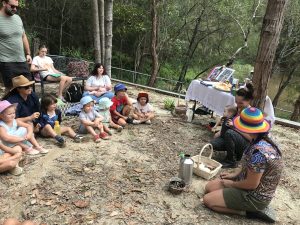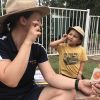![Indigenous Perspectives in Practice Term 2 Blog Part 1 Indigenous Perspectives in Practice Learning about Indigenous perspectives can help children learn about their own identities and understand the diverse cultural backgrounds of their peers. This understanding helps children build a sense of community, connecting them to others who can share ideas, values, and interests. Learning about and valuing Indigenous […]](https://www.kidsworldgilston.com/wp-content/uploads/2023/05/IMG_2751.jpg)
Term 2 Blog Part 1
Indigenous Perspectives in Practice
Learning about Indigenous perspectives can help children learn about their own identities and understand the diverse cultural backgrounds of their peers. This understanding helps children build a sense of community, connecting them to others who can share ideas, values, and interests.
Learning about and valuing Indigenous perspectives will enhance all children’s sense of Identity and place in the community. This can be achieved by understanding the Indigenous perspective concerning the natural world, respecting it as a living entity, co-existing with other cultures, and creating a sense of place within their community. When children learn about how Indigenous cultures have interacted with nature over time, they can better understand how to care for it in the future.
Learning about how traditional practices have been adapted to modern life allows children to see and respect that there is more than one way of doing. Children who have been taught these perspectives will feel empowered to act in their communities because they recognise that what happens there affects everyone else too.
“The Early Years Learning Framework states that all children should be given opportunities to learn about Aboriginal and Torres Strait Islander cultures as part of their curriculum (Early Years Learning Framework, 2009). The State of Victoria Department of Education and Training agrees, stating, “Learning about and valuing the place of Aboriginal people will enhance all Victorian children’s sense of place in our community” (The State of Victoria, Department of Education and Training, 2016, p. 4).
Tracey Linn Bostock, a descendant of the Bunjalung nation, states, “In the Australian context, it is essential that every childhood educator and children service professional, child and family have access to Indigenous cultures, knowledges and ways of learning and teaching. It’s the right of Australians to know our history” (Communitiesatwork, 2015)
- Miss Moni
|
Term 2 Blog Part 2
Indigenous Perspectives in Practice
Sue Atkinson shares that Possum skin pedagogy is an approach to teacher education that foregrounds Indigenous knowledge, story, and cultural practices in education programs. She describes the process and protocols as a journey where we can learn about Indigenous cultures respectfully.
We believe in consulting with council members who can share their knowledge of local culture. Through consultation, we can better understand the local Indigenous culture, allowing us to connect ourselves and our children because we know more about where we come from and how this affects our relationships and environments (Atkinson, 2017).
We believe connecting with Indigenous communities, and learning about their place’s historical context and how it has changed over time. This gives us a better understanding of what it means for children to live in a place with a complicated history around settler-colonialism. It also allows us to see how colonisation continues today through early childhood education.
To understand the historical context of where we work and live, we must be willing to listen to stories from Indigenous communities about their experiences with colonisation. If permission is given, we can use this knowledge to support Indigenous and non-Indigenous children in our classrooms.
This is important because it allows us to begin making classroom changes that reflect understanding these issues and create a curriculum based on collaborative partnerships with local communities, families, and children. “Collaborative relationships with families are fundamental to achieving quality outcomes for children, and community partnerships based on active communication, consultation and collaboration are essential” (Australian Children’s Education and Care Quality Authority, 2011).
Atkinson stresses the importance of buying authentic resources. Buying authentic Indigenous resources is one of the best ways to support Aboriginal artists and give back to their communities.
When buying art, we’re not just buying a beautiful piece that ‘looks the part’. We are supporting the livelihood of an Indigenous artists and their communities. Buying Indigenous resources ensures the money goes back to the artists and their communities, creating long-term sustainability for Indigenous communities. It also allows us to learn more about Indigenous perspectives authentically.
Online resources such as Yarn Strong Sista and the Kombumerri project is just a few resources we use to respectfully embed Indigenous perspectives respectively.
- Miss Moni

 JUSTINE DILLON
JUSTINE DILLON
